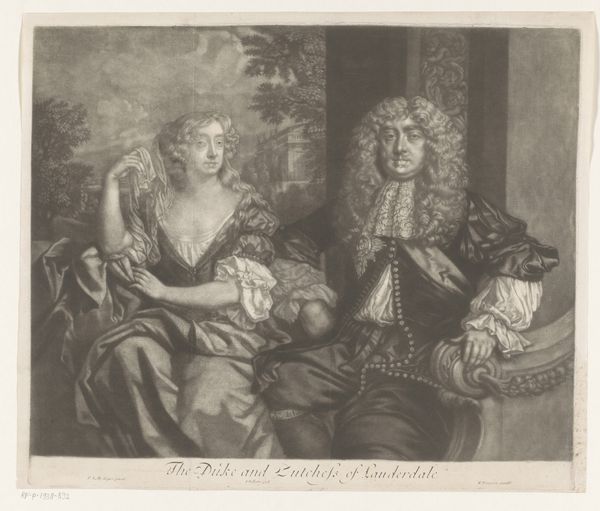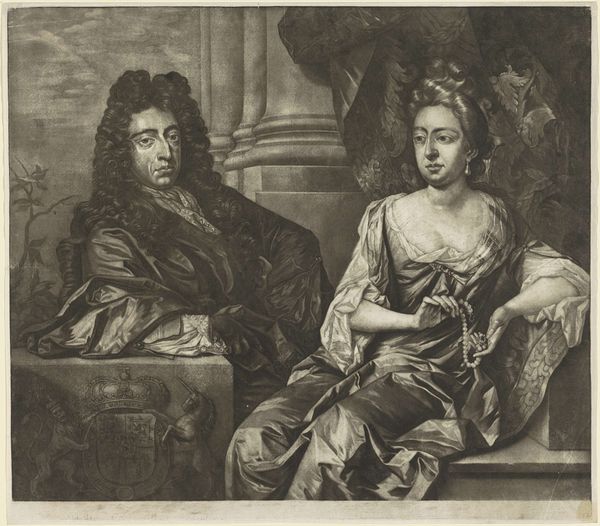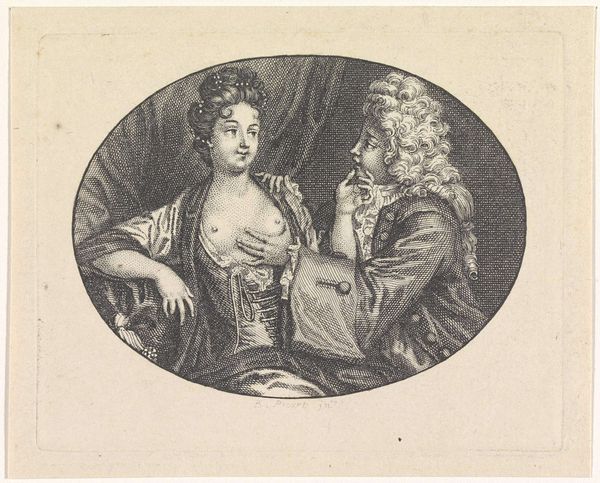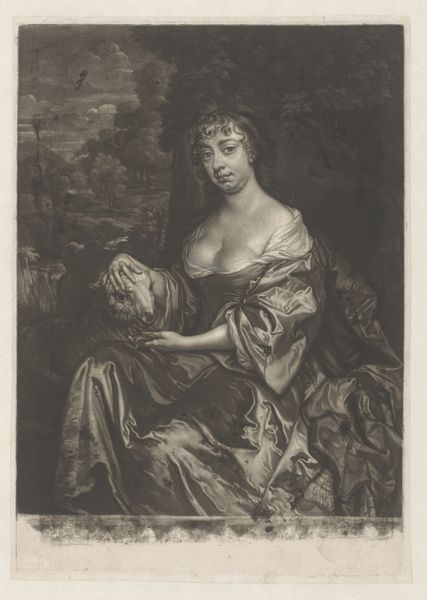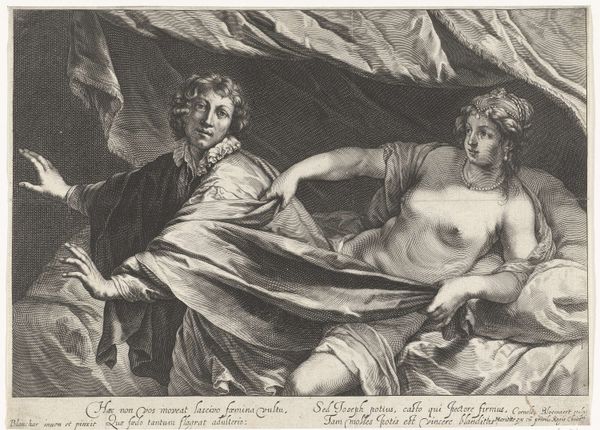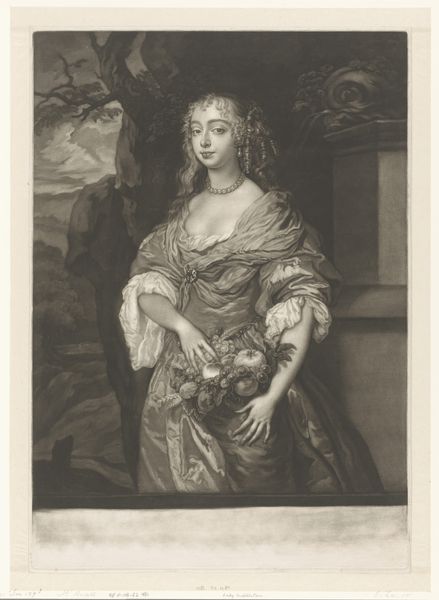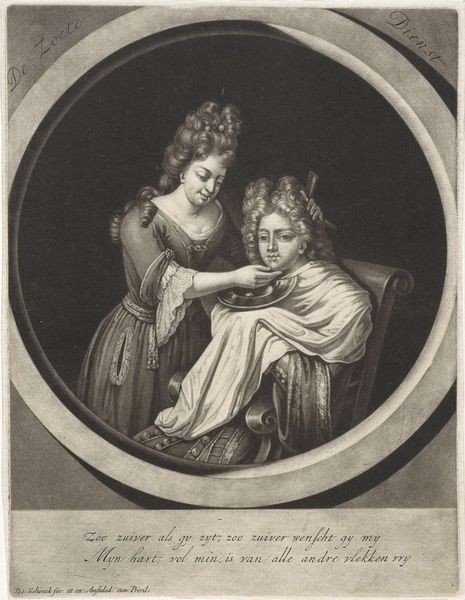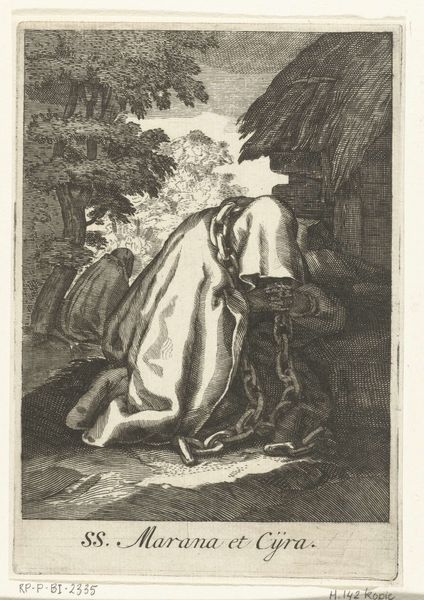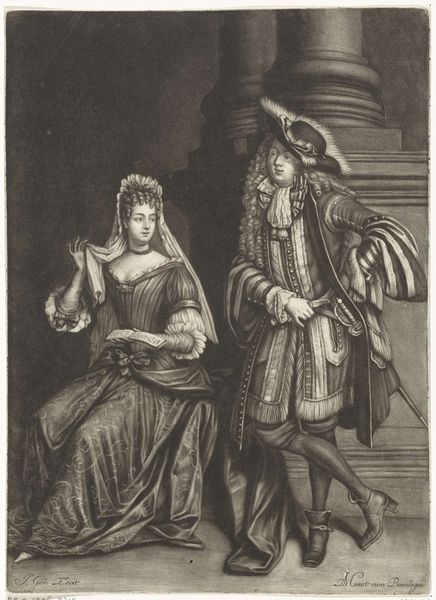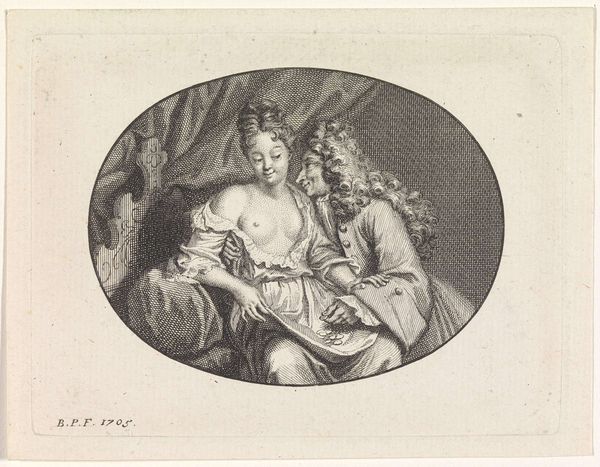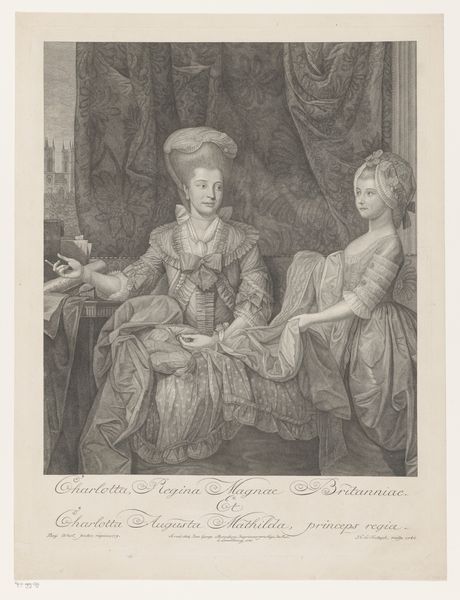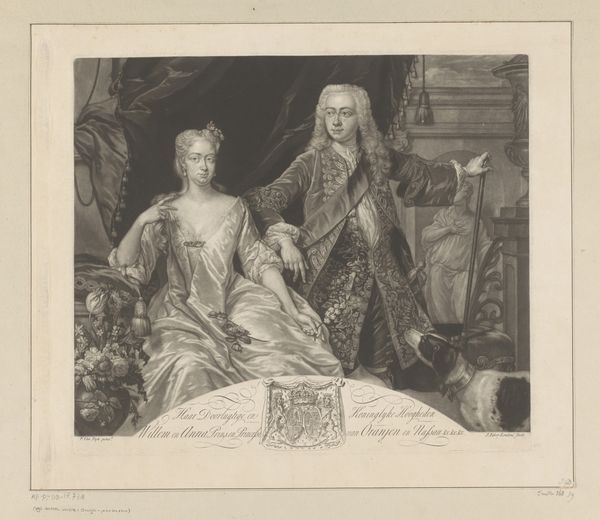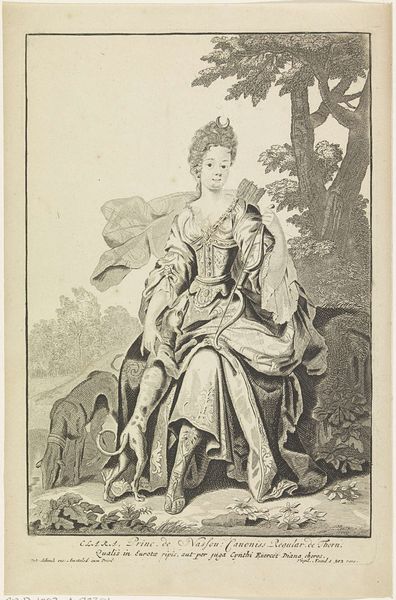
engraving
#
portrait
#
baroque
#
dutch-golden-age
#
group-portraits
#
engraving
Dimensions: height 254 mm, width 310 mm
Copyright: Rijks Museum: Open Domain
Editor: This engraving, "Dubbelportret van Ann Kirke en Anna Dalkeith," is attributed to Johannes Gronsveld, dating roughly from 1679 to 1728. I’m struck by the formality of the piece – the subjects’ composure, the drapery, the almost staged backdrop. How do you interpret this work through a historical lens? Curator: It’s a fascinating window into the social and cultural landscape of the Dutch Golden Age and the Baroque period. Group portraits like these weren't simply about representation; they were performances of status. How do you see their attire playing into that? Editor: I notice their elaborate gowns and jewels, signalling wealth, definitely! It is like a branding, of sorts, to create the desired impression of their families. Curator: Precisely. It is interesting to reflect on the role portraiture played in shaping perceptions, constructing identities and bolstering authority. Do you find that portraits have similar roles in contemporary society? Editor: Definitely. Think of official photographs of political figures, or even the curated image we put on social media profiles. They all project a particular image of ourselves to others. It’s like we’ve inherited that from earlier eras and changed its format. Curator: That's a keen observation. Consider, also, the role of patronage here: Who commissioned this work, and what was their agenda in immortalizing these women in such a way? Understanding the economics and the social networks involved unlocks so much of the image’s meaning. Editor: Thinking about the social context really makes me look at the engraving differently – not just a pretty picture but a carefully constructed image loaded with social and political weight. Thanks for that. Curator: And I learned as well from your comparison to contemporary examples. Thank you.
Comments
No comments
Be the first to comment and join the conversation on the ultimate creative platform.
